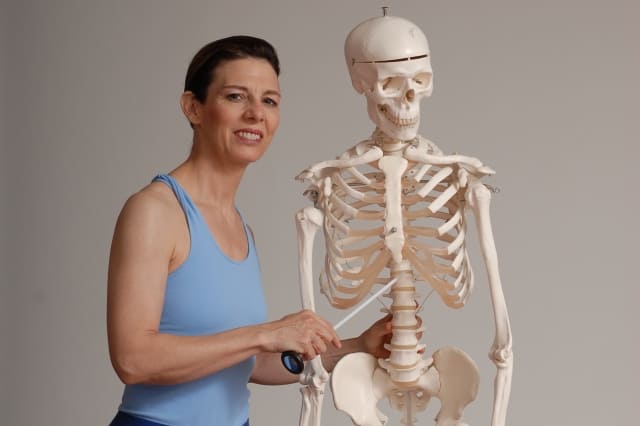Did you know that bone health attention is necessary throughout the life span and why Pilates can help?
Osteopenia and osteoporosis are more commonly considered conditions of menopause, yet adolescence, athleticism, and pre-natal and post-natal times are also times of life where low bone density and fractures can confuse and derail our clients.
Learn about how Pilates helps bone health in varying ways throughout the lifespan and its activity stages with a fascia-focused emphasis. Become knowledgeable about what exercises to include and which to avoid to sidestep the “one size fits all” concept of low bone density activity in Pilates.
Mat, Reformer and Trapeze Table equipment are all addressed within 2 Labs.
Objectives
At the end of this course, participants will:
- Better understand the differences between the scenarios of osteopenia and osteoporosis;
- Better understand basic bone anatomy and basic bone generation physiology;
- Better understand the fascial connections from superficial fascia to periosteum;
- Better understand the underlying causes and implications of osteopenia and osteoporosis occurrences within adolescence, child-bearing years, pre- and post-menopausal times;
- Better understand the differences between primary and secondary osteoporosis;
- Better understand how to help better address the exercise needs within these distinct times of life;
- Better understand the role that nutrition plays in these different scenarios;
- Learn the components of a bone health program;
- Better understand sarcopenia and how to address aging muscle loss in the Pilates Environment;
- Better understand how to apply contraindicated movement preparation for the differing scenarios of osteopenia and osteoporosis;
- Learn bone-building recommendations and safety modifications for Pilates exercises to effectively address bone strength and quality.
Lesson Plans
Module 1. Lecture
- Bone anatomy: connective tissue, collagen, Haversian system organization, trabecular and cortical bone, fascial connection from superficial to periosteum
- Bone acquisition in growth and diminishment with age
- Primary and secondary osteoporosis
- Understanding assessments for bone density, fracture risk
- Adolescence: bone development, nutrition, and body overuse
- Pregnancy related and breastfeeding bone loss
- Peri-and post-menopause bone loss and bone building
- Fragility and Fracture
- Fall Prevention and Pain
- Components for a Bone Health Program
- Sarcopenia and Importance of Muscle in Aging
- Osteogenesis with Pilates in the Pie
- Additional methods of bone building
- General Fitness and Lifting Guidelines
LAB1: Hour 1-2
- Youth Guidelines
- Extension protection/ Flexion strength
- Training vertebral stability
- Anticipatory core/ Paravertebral use before orientation moves
- Deep fascial flexor line development
- Pre-Post Natal Guidelines
- Pre-natal 3rd trimester
- Vertebral stability (LB and groin)
- Seated and Standing Pilates
LAB2: Hour 3-4
- Pre- and post-menopause Guidelines
- Extension preservation/ Flexion protection
- Isometric lean counterforce kyphosis correction
- Isometric Trap table bottom loaded and top loaded upper body progressions
- Isometric seated stretchy band upper body flexion and reach progressions
- Osteopenia versus Osteoporosis and Pilates Vocabulary
- Muscle acquisition in free weight use
- Fall prevention: balance and agility
- Fall survival: wrists/ thoracic/ hips
- Plyometric Pilates for Power: Jump board/reformer, Wobble board, Resistance band, Hopping acquisition


